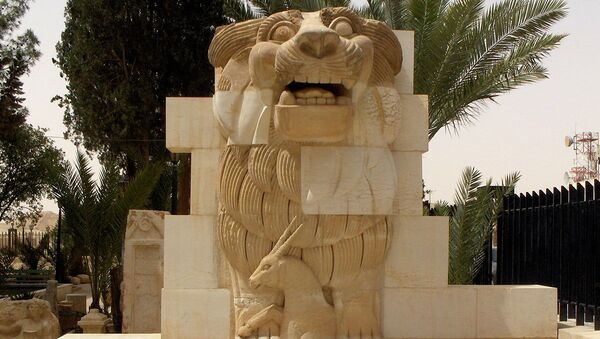Syria's antiquities director Maamoun Abdelkarim said that Islamic State militants have destroyed a famous 2,000-year-old statue of a lion outside the museum in the Syrian city of Palmyra, a UNESCO world heritage site.

The statue, which is made of limestone, dates back to the 1st century BC; it was discovered in 1977 by a Polish archaeological mission at the temple of al-Lat, a pre-Islamic Arabian goddess.
"IS members on Saturday destroyed the Lion of al-Lat, which is a unique piece that is three meters (10 feet) tall and weighs 15 tons. It's the most serious crime they have committed against Palmyra's heritage," Abdelkarim said.
He also said that the statue had been covered with a metal plate and sandbags to protect it from the fighting, adding that "we never imagined that IS would come to the town to destroy it."

The Islamic State captured Palmyra from government forces on 21 May, the jihadist group subsequently blew up several historic Muslim graves.
Late last month, the UK-based Syrian Observatory for Human Rights said that Islamic State militants had planted explosives and mines in the ruins of the Palmyra, adding that "it is unknown whether they have mined the city in order to destroy the antiquities or to prevent the [Assad] regime forces from getting advance towards the city."



